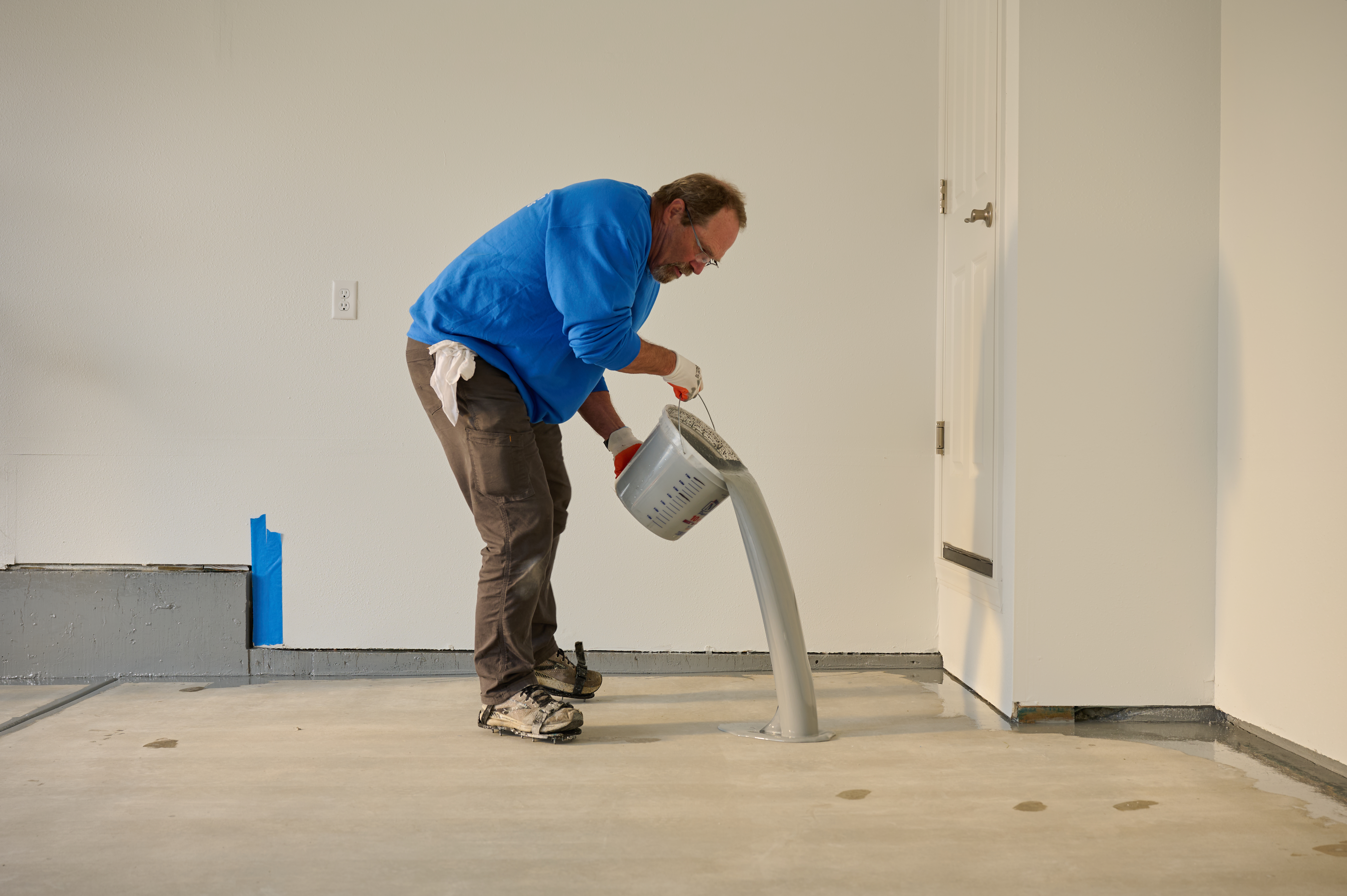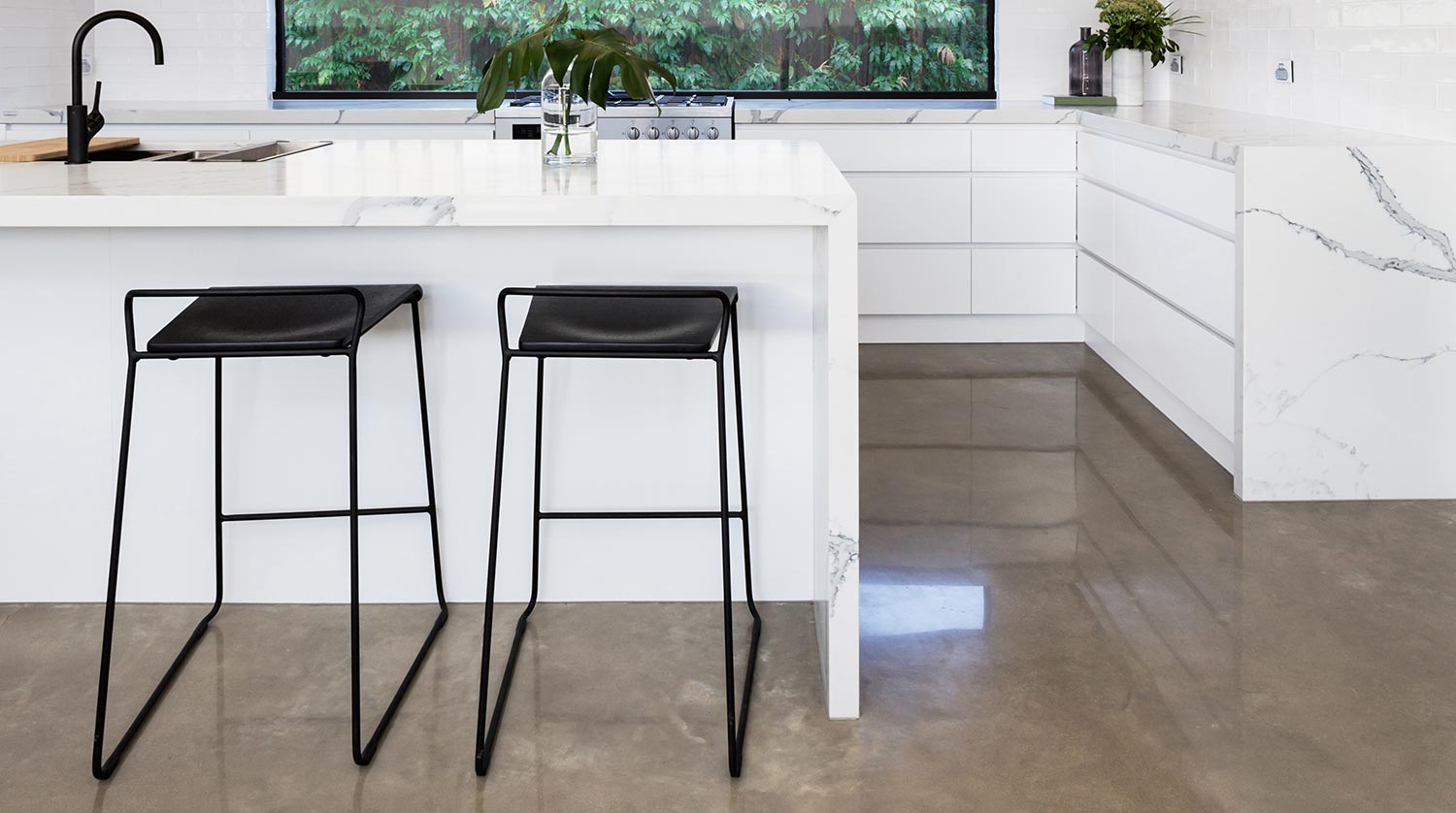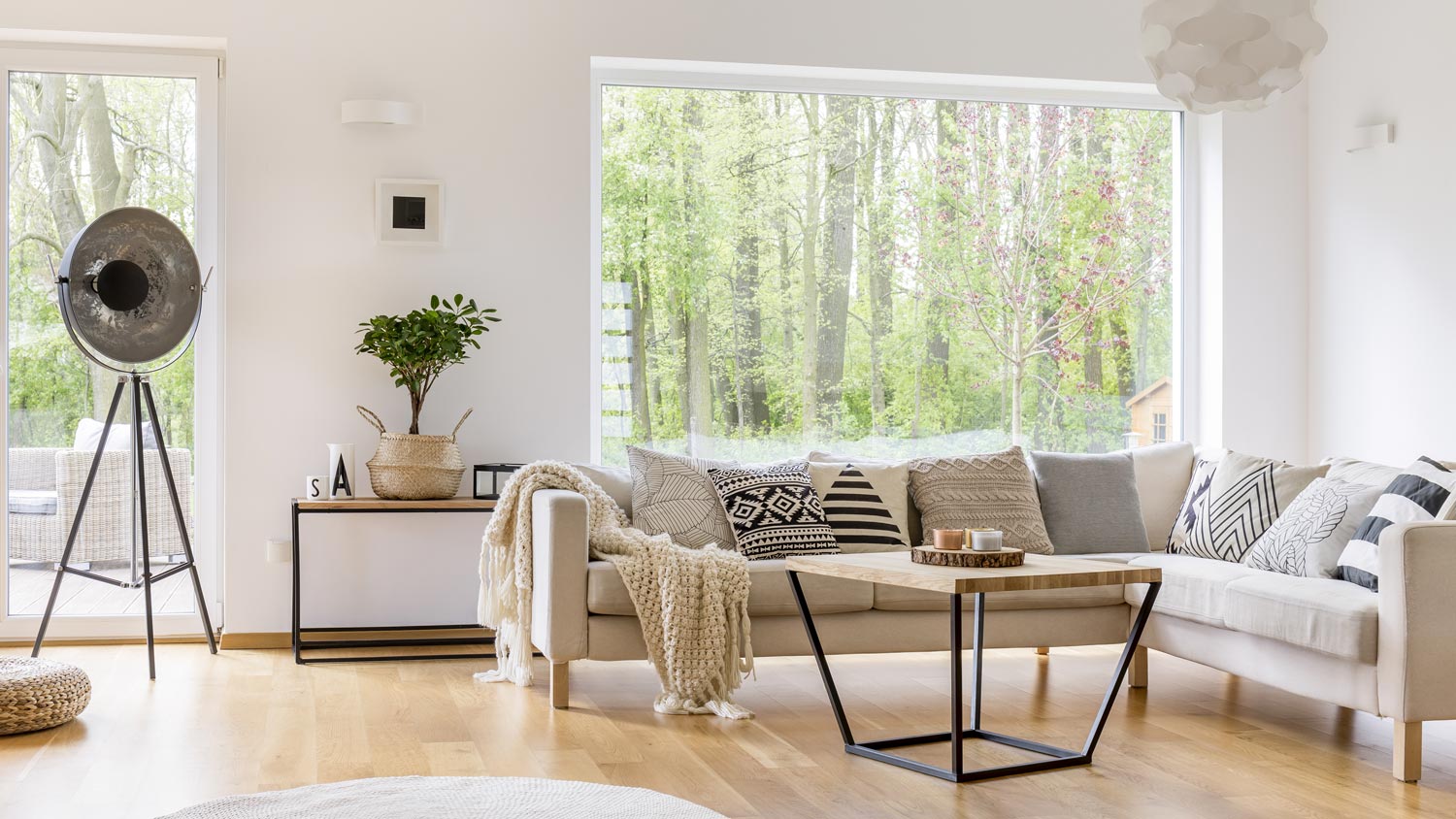
Staining concrete floors can add a little something to a drab slab. Learn more about how much stained concrete floors cost and what factors impact it.
Replacing baseboards costs $1,100 on average, and most homeowners pay between $800 and $2,250. A pro will determine your final cost based on material, installation type, and size.


Your total baseboard installation costs depend on factors such as project size, baseboard style, prep work required, and labor rates.
MDF is a cost-effective alternative to wood that’s durable, easy to work with, and good for painting, costing $1 to $1.40 per linear foot.
More ornate, sculpted styles are roughly twice the cost of traditional rounded or stepped baseboards, ranging from $13 to $ 15 per linear foot.
Local baseboard pros charge between $5 and $7.75 per linear foot for installation.
Baseboard installation costs $1,100 on average, but small projects go as low as $750, and complex projects go as high as $3,000. Prices range from $5.70 to $9 per linear foot for materials and labor, depending on the baseboard height and style. Adding on services like baseboard removal, painting, and repairs will drive up the cost.
When determining how much you’ll pay to replace baseboards in your home, you’ll find that the costs can be broken down into two categories: materials and labor. Remember that you’ll pay a little more if you need to remove your baseboards or if you choose a premium baseboard material.
Larger areas mean higher costs for this project, with prices ranging from $5.70 to $9 per linear foot for labor and materials. However, many pros will offer price breaks of around $0.50 per linear foot for larger projects.
| Size (Linear Feet) | Average Cost |
|---|---|
| 100 | $570–$900 |
| 200 | $1,140–$1,800 |
| 300 | $1,710–$2,700 |
| 400 | $2,280–$3,600 |
| 500 | $2,850–$4,500 |
| 1,000 | $5,700–$9,000 |
| 2,000 | $11,400–$18,000 |
To determine the coverage you’ll need, use a tape measure to measure each of your walls and subtract the length of doorways. Once you have the total cost in inches, divide that by 12 and you’ll have an exact count in linear feet for a more accurate price quote.
Baseboards fall into four basic material categories: Wood, medium-density fiberboard (MDF), polystyrene, and PVC. Wood is the most costly, but it has a luxe look, lasts the longest, and is easy to repair. You’ll pay more for hardwoods like oak, cherry, maple, and mahogany. PVC costs the least but is prone to damage and impossible to repair.
| Baseboard Type | Average Cost per Linear Foot |
|---|---|
| PVC | $0.90–$1.40 |
| MDF | $1–$1.40 |
| Polystyrene | $1.15–$1.65 |
| Pine | $1.40–$1.85 |
| Poplar | $1.90–$2.50 |
| Maple or oak | $2.50–$5 |
| Cherry or mahogany | $4.50–$10 |

A major cost factor when installing baseboards is the style and material you choose. Premium varieties can cost significantly more, so it’s helpful to have an idea of what you want before you start calling for quotes.
“Replacing baseboards is a project that varies greatly in complexity and cost,” says Andrew Kilborn, owner of Andy’s Handyman. “Determining the style and material you want is very important to get an accurate estimate.”
| Baseboard Style | Average Cost |
|---|---|
| Rounded or stepped | $0.90–$5.50 |
| Flat | $1.80–$7 |
| Sculpted | $2–$13 |
Because adding height to your baseboards increases the lumber required, taller baseboards are more expensive than shorter ones. Each additional quarter inch on your baseboard molding adds $0.25 to $0.50 per linear foot.
| Baseboard Height (Inches) | Cost per Linear Foot |
|---|---|
| 3 ¼ | $1–$2.50 |
| 3 ½ | $1.25–$3 |
| 4 | $1.75–$4 |
| 4 ¼ | $2–$4.50 |
| 5 | $2.75–$6 |
| 5 ¼ | $3–$6.50 |
| 5 ½ | $3.25–$7 |
You may also have to budget for a few additional costs, including labor for removing existing baseboards, site preparation, painting or staining, potential wall repairs, and debris disposal.
The labor cost to install baseboards is $5 to $7.75 per linear foot, which will account for the vast majority of your overall project cost.
Your carpenter will have all the equipment necessary to install your baseboards. However, they may work in the costs of incidentals, including nails, caulk, and putty, into their quote. The price of these materials depends on the size of your project, but they often cost between $25 and $100.
The main site preparation you’ll need to account for is the removal of old baseboards. Most installers will charge $50 to $100 per hour for this service.
Removing existing baseboards will cost about $50 to $100 per hour in labor. This will include debris removal, but you may need an additional removal service for around $20.
Painting baseboards will cost an additional $1 to $6 per linear foot on average. Some styles of baseboards come unfinished, meaning you’ll need to paint or stain them to complete the job. Installers can do this for you, but you’ll have to pay extra. You might also want to hire a local painter if you plan on repainting your entire room (or home).
Repairs vary based on the project. The average drywall repair costs around $300 for a small project or up to $900 for more extensive damage.
If you are removing old baseboards, many contractors will include debris removal in the initial cost. If not, expect to pay around $20 for additional debris removal services.
While there aren’t many ongoing costs after installing new baseboards, there are a couple of potential expenses that you may run into.
Over time, baseboards can get scuffed and stained. If cleaning your baseboards doesn’t bring them back to life, then you might decide to repaint them. Hiring a professional to paint your baseboards costs between $1 and $6 per linear foot.
Similarly, if your baseboards are damaged, you may need to have a pro fix them. Fixing trim or baseboard issues will cost between $5.70 and $9 per linear foot, depending on the extent of the problem and the materials needed to fix it.

When your baseboards start showing signs of wear, you’ll need to decide between repairs and full replacement. Minor issues like small dents, scratches, nail holes, or loose sections can be repaired for about $5.70 to $9 per linear foot. Replacement costs the same per linear foot, but you’ll only need to repair the damaged areas, which lowers your total cost.
Repairs make sense when the damage is localized and the overall condition of your baseboards is still good. However, if you’re dealing with extensive damage or multiple problems throughout the room, replacement might be the better option. Also, replacement may provide a better long-term value because the baseboards will look cohesive. A pro can help you decide which route is the better option.
If you’re looking to save on your cost to install baseboards, there are a few great ways to do it. Here’s how to shave dollars off your budget:
Repaint your baseboards rather than replacing them altogether.
Remove your old baseboards yourself and haul away the debris before your pro arrives.
Choose less-expensive varieties, such as MDF or pine.
Ask your contractor if you can paint or stain the baseboards yourself prior to the installation.
Depending on the materials you choose, DIY baseboard replacement costs $0.80 to $1.20 per linear foot. However, it doesn’t take much to derail baseboard installation. If you hit a strange angle that’s difficult to cut or can’t get your baseboards to look straight over your crooked floors, you could be facing a roadblock that’s impossible to get around.
Instead of risking baseboards that detract from the beauty of your home, it’s best to hire a local baseboard installer. They’ll get the project done faster and leave you with beautiful results.
Installing baseboards is more complex than it looks. Here’s why it’s best to hire a pro for the job:
Professionals know how to accurately measure, cut, and fit baseboards to avoid gaps or uneven edges.
Experienced pros have specialized tools and techniques needed for precise cuts, caulking, and finishing.
DIY installation can lead to uneven lines, damaged walls, and costly repairs.
Reputable pros offer labor warranties for added peace of mind.
Professionally installed baseboard can enhance the look and value of your home.
To assist your pro with the project, consider helping out with the following tasks:
Remove furniture, decor, and obstacles from the work area
Assist on minor sanding or painting tasks with your pro's guidance
Keep tools and materials organized and easily accessible
Clean up dust and debris after the project is complete
Talk with your pro about which baseboard material, such as wood, MDF, or PVC, best fits your budget and style.
Provide your pro with the precise measurements of your project and the room layout.
Ask about potential upgrades like decorative molding, custom profiles, or specialized stains.
Let your pro know about any tricky corners, flooring transitions, or obstacles that could affect the project's complexity.
Home is the most important place on earth, which is why Angi has helped more than 150 million homeowners transform their houses into homes they adore. To help homeowners with their next project, Angi provides readers with the most accurate cost data and upholds strict editorial standards. We extensively research project costs to develop the pricing data you see, so you can make the best decisions for you and your home. We rely on reputable sources, including the U.S. Bureau of Labor Statistics, academic journals, market studies, and interviews with industry experts—all to ensure our prices reflect real-world projects.
Want to help us improve our cost data? Send us a recent project quote to [email protected]. Quotes and personal information will not be shared publicly.
From average costs to expert advice, get all the answers you need to get your job done.

Staining concrete floors can add a little something to a drab slab. Learn more about how much stained concrete floors cost and what factors impact it.

Pouring a new concrete floor can create new usable space for your home and raise its value. This guide breaks down what affects project costs.

Warm floors, warm feet. Learn how much radiant heated floor costs, types of radiant floor heating systems, and pros and cons.

If you’re dealing with warped or creaky floors, it could be a subfloor issue. This guide will show you how to replace a subfloor totally DIY.

Discover the cost to polish concrete floors, including price ranges, key cost factors, and tips to help you budget for your next flooring project.

Updated flooring can make any room in your home feel brand new. Explore flooring installation costs in Tampa, FL, from materials to labor costs.